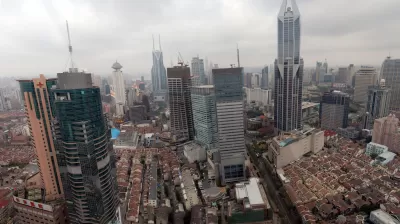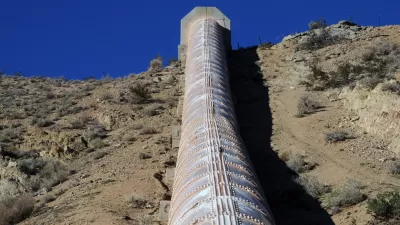After a period of modernization and urban growth unrivaled in human history, several forces promise a slump, or at least a slowing. Maybe it's time to improve existing cities, not keep building new ones.

Whatever your opinion of China's government, it cannot be denied that the country has undergone a miraculous transformation over the past several decades. Pumped up by global and regional trade, the country's cities have absorbed rural migrants in the hundreds of millions.
As Adam Minter writes, "For a while, seemingly all a local government had to do to inspire growth was kick some farmers off their land, build an industrial park and offer tax breaks to the first factory willing to open up." But that might not last too much longer, for several reasons.
The first is demographic. "In the 1970s, China had a surplus of young, under-employed workers in its countryside. That's no longer the case. The working-age population has been in decline since 2011, and the country's birthrate continues to drop."
In addition, the impetus to move to cities has faded somewhat. "Today's workers also aren't nearly as interested in moving away from home as past generations were. Last year, China's migrant population fell by 5.68 million -- the first decline in three decades. Conditions in the countryside have improved markedly in recent years, and rural incomes are rising faster than urban ones, thanks to decades of infrastructure investment and the growing reach of e-commerce."
All things considered, it's unlikely Beijing will meet its goal of boosting the urbanization rate to 60 percent by 2020. But then again, it's China.
FULL STORY: Has China Reached Peak Urbanization?

Alabama: Trump Terminates Settlements for Black Communities Harmed By Raw Sewage
Trump deemed the landmark civil rights agreement “illegal DEI and environmental justice policy.”

Study: Maui’s Plan to Convert Vacation Rentals to Long-Term Housing Could Cause Nearly $1 Billion Economic Loss
The plan would reduce visitor accommodation by 25% resulting in 1,900 jobs lost.

Why Should We Subsidize Public Transportation?
Many public transit agencies face financial stress due to rising costs, declining fare revenue, and declining subsidies. Transit advocates must provide a strong business case for increasing public transit funding.

Wind Energy on the Rise Despite Federal Policy Reversal
The Trump administration is revoking federal support for renewable energy, but demand for new projects continues unabated.

Passengers Flock to Caltrain After Electrification
The new electric trains are running faster and more reliably, leading to strong ridership growth on the Bay Area rail system.

Texas Churches Rally Behind ‘Yes in God’s Back Yard’ Legislation
Religious leaders want the state to reduce zoning regulations to streamline leasing church-owned land to housing developers.
Urban Design for Planners 1: Software Tools
This six-course series explores essential urban design concepts using open source software and equips planners with the tools they need to participate fully in the urban design process.
Planning for Universal Design
Learn the tools for implementing Universal Design in planning regulations.
Caltrans
Smith Gee Studio
Institute for Housing and Urban Development Studies (IHS)
City of Grandview
Harvard GSD Executive Education
Toledo-Lucas County Plan Commissions
Salt Lake City
NYU Wagner Graduate School of Public Service





























